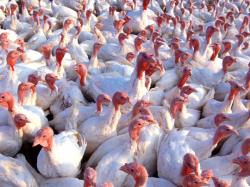APHIS Releases Partial Epidemiology Report On Highly Pathogenic Avian Influenza
June 17, 2015 | 1 min to read

The United States Department of Agriculture’s Animal and Plant Health Inspection Service (APHIS) have released an epidemiology report outlining its initial findings through June 5 about how highly pathogenic avian influenza (HPAI) was likely entering new premises during this period of time. After conducting investigations on over 80 commercial poultry farms, APHIS analysis indicates that there are likely several ways the virus could be transmitted, including lapses in biosecurity practices and environmental factors. APHIS cannot, however, associate HPAI transmission with one factor or group of factors in a statistically significant way at this time, and will continue to update this report regularly as more analyses are completed.
APHIS scientists believe wild birds were responsible for introducing HPAI into commercial poultry. While wild birds are the original pathway for the virus’ introduction into the United States, it appears the virus was spreading in other ways as well, given the number and proximity of farms affected by HPAI. For instance, the report provides evidence that a certain cluster of farms was affected by identical viruses, pointing to possible transmission among those farms. In addition, genetic analyses of the HPAI viruses suggest that independent introductions as well as transmission between farms were occurring in several States concurrently.
To read the rest of the story, please go to: USDA APHIS
